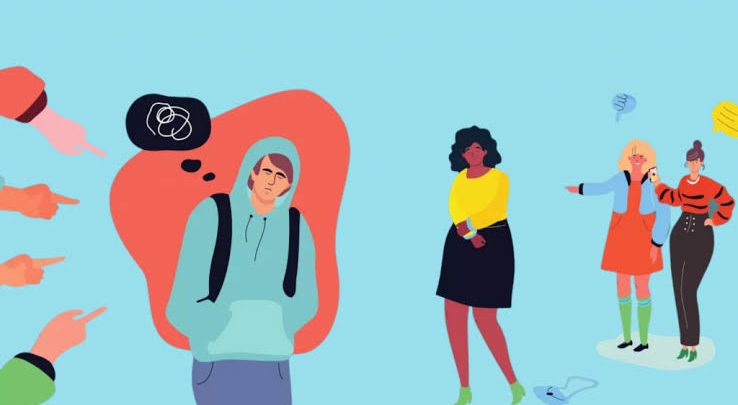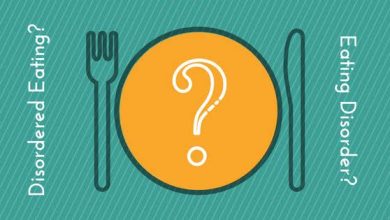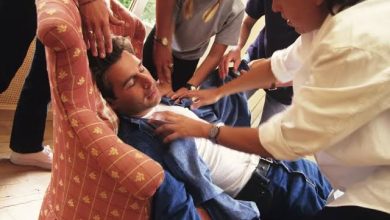Health
Beyond Shyness: Living with Social Anxiety Disorder

Have you ever had a thumping heart, sweaty palms and a rumbling stomach just before a presentation? Have you ever felt awkward or out of place in a social gathering? Have you ever lain on your bed at night rethinking one or two conversations you had during the day? You most likely answered yes to at least one of these questions. And that is expected; most of us do not have a perfect level of self-confidence. But for people like M* that reality is an everyday occurrence.
“I would rethink conversations for days after they held, and avoid situations where I had to talk to someone. I would plan out situations I was going to be in before I left the house. Sometimes I just stayed in because I was having palpitations. I was very self-conscious. I used to dread practicals where we had to choose our groups by ourselves. I thought I was just an introvert, then one day I realised my condition had a name; social anxiety disorder”
M
Social anxiety disorder—formerly known as social phobia—is a long-term overwhelming fear of social situations. The American Psychological Association defines it as “a fear of social situations in which embarrassment may occur (e.g., making conversation, meeting strangers, dating) or there is a risk of being negatively evaluated by others (e.g., seen as stupid, weak, or anxious).”
A Nerve-racking Existence
M’s experience is not special. Social anxiety disorder is the third most common mental health condition following substance use disorder and depression. Up to 13% of the population have the condition, especially adolescents and young adults. This prevalence is higher in women. Often associated with disorders such as depression, generalised anxiety disorder, and panic disorder, it is an extremely disabling condition.
People with social anxiety disorder worry excessively—for days and weeks—in anticipation of situations like meeting people, talking in meetings or in groups, talking to authority figures, going to school, shopping, being seen in public, and public performances including speaking . They try as much as possible to avoid situations in which they think they will be observed, evaluated, or judged by others. When they cannot avoid such situations, they endure them with significant distress. Everyday situations such as using a public toilet or eating in public causes them extreme anxiety.
Like other mental health conditions, social anxiety disorder is a spectrum ranging from mild to severe. It could be as mild as feeling self conscious about eating in front of others to as severe as having panic attacks and using drugs as an escape mechanism. In addition, some people experience social anxiety in some situations but not others.
People with social anxiety disorder may experience these symptoms in a social situation:
- Blushing, sweating or trembling
- A rapid heart rate
- Going blank
- Feeling nauseous
- Rigid body posture
- Change in tone of voice
- Avoiding eye contact, and not talking even when they need to
- Extreme self-consciousness
- Excessive fear that people will judge them negatively.
- Avoiding places where there are other people
The American Psychiatric Association puts the benchmark for diagnosis at “six or more months of persistent fear, anxiety, or avoidance in one or more social or performance situations”.
Social anxiety disorder usually begins during late childhood and is often mistaken for shyness. Notwithstanding, it may manifest much later in adulthood for some people. Adolescents and adults tend to assume that they are experiencing symptoms because they are introverts. However, while introverts can usually cope and do not fear judgement excessively, people with social anxiety struggle with social situations, and fear the judgement of others; so they go to great deals to avoid them.
The exact cause of social anxiety disorder is unknown. However, genetics have been found to play a role. Parts of the brain involved in modulating fear and anxiety have also been implicated. Stressful social events in early life such as being bullied, experiencing abuse, public embarrassment or going blank during a public performance are commonly reported by people with social anxiety disorder. Parental modelling of fear and avoidance in social situations and an overprotective parenting style have been linked development of the condition. Some socially anxious young people will outgrow the phase, but many continue to experience it well into adulthood. It is also possible to fluctuate between different levels of social anxiety throughout life.
The impact of social anxiety disorder is infinitely more far-reaching than a few awkward social encounters. People with the disorder have fewer friends and have more difficulty getting on with friends, are less likely to marry, more likely to divorce, and less likely to have children. They also tend to take more days off work and leave jobs that involve giving presentations. In states where it’s applicable, they are more likely to rely on government benefits.
Offering Hope
Like M, many live with debilitating social anxiety in their every day lives. Because of the nature of the disorder, they find it even more difficult to open up about what they’re going through. Unfortunately, the worst thing a person with social anxiety disorder can do is to continue avoiding the situations they fear. The aftermath of the COVID-19 lockdown for many was the exacerbation of their symptoms, leaving them crippled.
If you think you may have social anxiety disorder, there is hope. A number of treatments have been identified that greatly help manage and even treat social anxiety disorder.
- Cognitive behavioral therapy (CBT), is a research-supported type of psychotherapy, used to treat mental health conditions such as social anxiety disorder. Exposure therapy is a CBT method that focuses on making you progressively confront the fears underlying your anxiety disorder to help you engage in activities you have been avoiding. Exposure will typically begin with imagining the social situations that make you anxious, then putting yourself in a low-risk social situation and steadily increasing that. While this is typically done with the guidance of a therapist, you can attempt to do it yourself, if you do not have access to one.
- Psychodynamic therapy: This uses self-reflection and self-examination, and is based on the idea that a person’s unconscious thoughts and perceptions are developed during childhood, later influencing their behavior. The goal of this therapy is to help you recognise and understand the deep-rooted feelings beneath your anxiety.
- Relaxation therapy: Relaxation techniques such as breathing exercises and meditation may help with some social phobias, but they are not effective treatment in the long-term.
- Medications: In some cases, the physical symptoms of social anxiety disorder may be severe. Selective serotonin reuptake inhibitors (SSRIs), other antidepressants and anti-anxiety medications provide much-needed relief. Beta-blockers may even be prescribed to return the heart rate to normal.
For those of us living with people who may have social anxiety disorder, we need to be more empathetic in our interactions. M recounted:
“I remember a classmate accusing me of not greeting them when I passed by. Maybe they interpreted it in another way, but I was just avoiding the interaction because I didn’t know how to deal with it. And that made me feel worse”
M
If you think you may be interacting with someone dealing with social anxiety disorder, here are some ways you can help:
- Normalise their feelings: Don’t tell them they’re abnormal, or that they’re exaggerating things.
- Don’t make light of the situation: Their anxiety is real. Don’t try to score cheap points by diminishing what they’re going through.
- Be patient: Even if you do not understand what they are going through, try to listen and be supportive.
- Engage them: Encourage them to engage in activities that scare them. Offer support by being there with them. Compliment them when they manage to handle their anxiety in tough situations.
- Help reframe situations: If they rant to you about a situation they’re anxious about, try to help them see it in a positive light.
- Suggest treatment: Suggest that they see a therapist to discuss their condition. If they are not ready yet, don’t push it.
Living with social anxiety is hard, and it’s important to seek help. Close friends and relatives play the most important role, but do not hesitate to join support groups and seek professional help, if it’s available to you. At the end of the day, no man is an island; we must all try to navigate the increasingly social world we live in.
*Initial changed to protect the identity of the respondent
Aisha Ibrahim
References
National Institute of Mental Health (2022). Social anxiety disorder: More than just shyness. National Institute of Mental Health. Available at: https://www.nimh.nih.gov/health/publications/social-anxiety-disorder-more-than-just-shyness.
National Collaborating Centre for Mental Health UK (2013). Social Anxiety Disorder: Recognition, Assessment and Treatment. Nih.gov. Available at: https://www.ncbi.nlm.nih.gov/books/NBK327674/.
Laurence, E. (2022). How To Overcome Social Anxiety, According To Experts. Forbes Health. Available at: https://www.forbes.com/health/mind/how-to-overcome-social-anxiety/.




